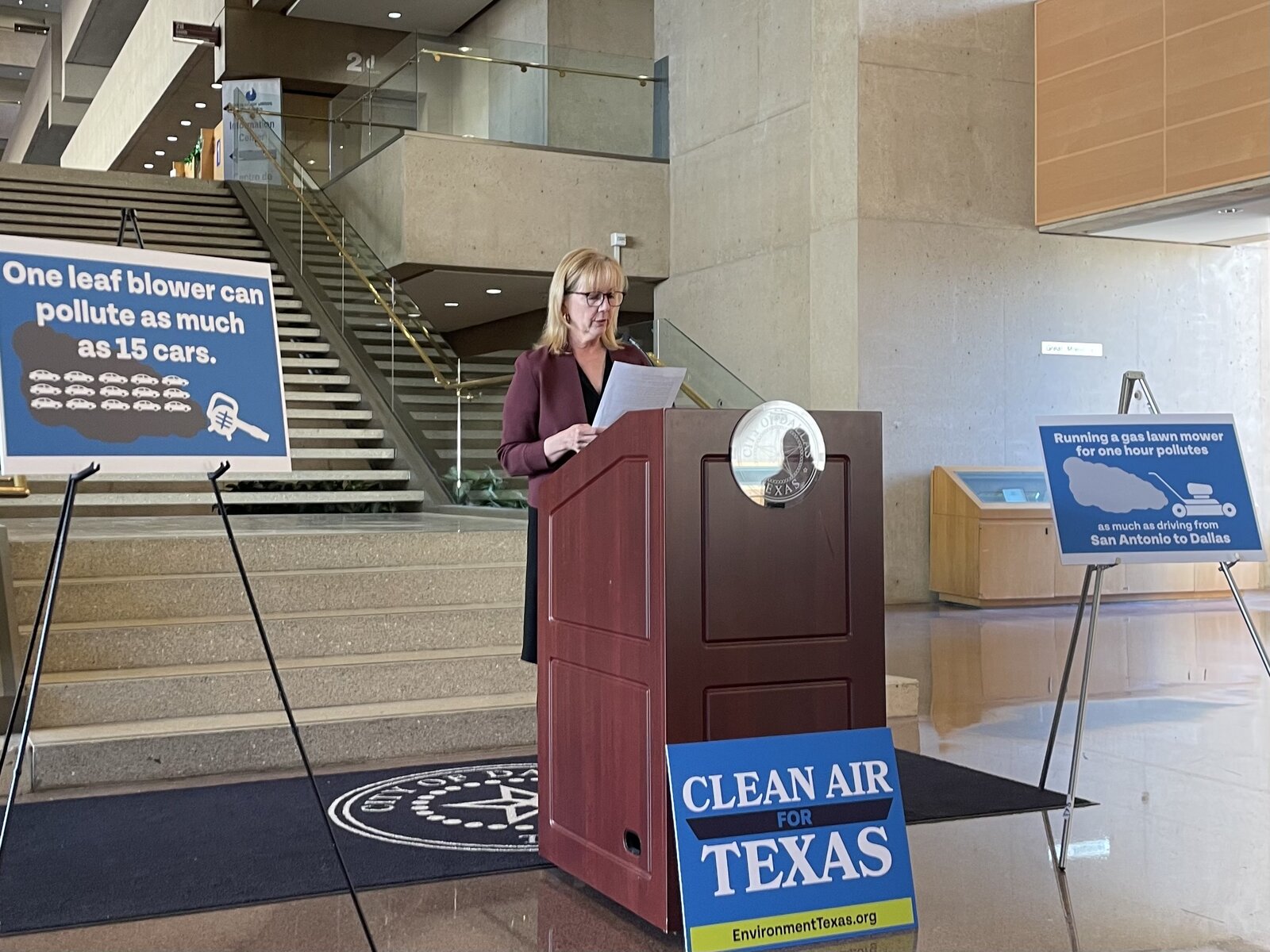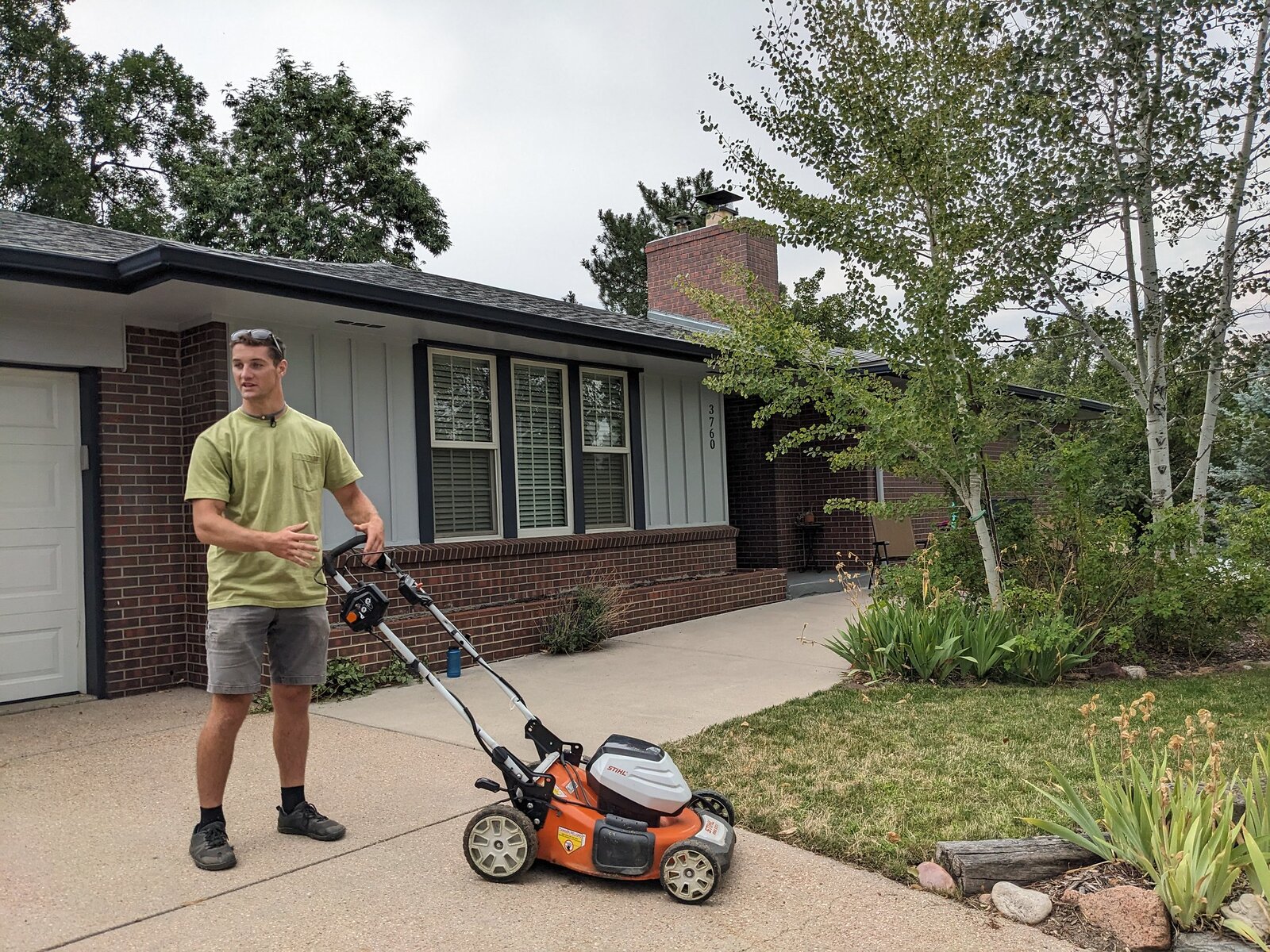For generations of Americans, the soundtrack to spring weekends has been a rise in bird song and the loud, constant “virrrrrr” of neighbors cutting their growing grass. But the gas lawn mowers, leaf blowers and weed eaters that have been used for over a century to keep lawns manicured are not only noisy — in the past few years, researchers have discovered that they also pose an outsized risk to the environment and to human health.
In response, cities across the U.S. are experimenting with incentive programs to encourage their residents to opt for more environmentally friendly electric lawn equipment. The shape these programs take is not one-size-fits all: From bans to rebates to tax credits offered at a variety of price points and stops along the customer journey, each program has made its own calculations that take into account what the location can afford and what will best attract residents to take action. But across the board, these relatively new programs are producing promising results.
“I think the most important thing is that it’s really exciting to see that so many cities and counties and states and utilities and communities across our country are taking action to tackle the really polluting, really loud, gas-powered lawn equipment,” says Kirsten Schatz, clean air advocate for Colorado Public Interest Network (CoPIRG). “It’s a real mix of approaches [that are being taken] with, I think, some mixed results. But altogether, things are moving in the right direction.”
Anything that runs on gas — think cars, planes, stoves and water heaters — releases greenhouse gases that contribute to the warming of the planet. An important step in curbing emissions is to transition these machines to electric whenever and wherever possible. You might think that saving up to tackle the biggest items would make the biggest impact on reducing your carbon footprint. But physical size does not always correlate to impact. Gas-powered lawn mowers and leaf blowers may be smaller than cars and used less frequently, but they produce a shocking amount of pollution because their engines are less efficient than those used in more technologically advanced products.
In 2020, the EPA published a report that found that gas-powered lawn equipment produced the same amount of fine particulate pollution in a year as 234 million cars and more carbon dioxide than the entire city of Los Angeles. In addition to polluting the environment, the toxic byproducts of running gas equipment have been linked to negative health impacts ranging from cancer and reproductive issues to mental health problems.
The benefits of going electric are many: In addition to being better for the environment and better for human health, battery-powered equipment has the potential to save money and is quieter. But, like all electrification efforts, switching requires what may at first seem like a hefty investment in new equipment — which is where incentives and rebates come in.
As with many environmental issues, California was a leader in addressing the problem, choosing both a carrot and a stick approach. In October 2021, the governor signed into law a ban on new gas-powered equipment that took effect in January 2024. In the lead-up to the ban, the state offered generous incentives covering more than 50 percent of the cost of new equipment and batteries. In just two years, Assemblymember Marc Berman estimated that 90 percent of the $30 million allotted to these rebates had already been paid out.
Weighed down by negative news?
Our smart, bright, weekly newsletter is the uplift you’ve been looking for.
While several other communities have also adopted bans, including Washington D.C., Honolulu and Burlington, Vermont, a larger number of programs across the country have taken an incentive-only approach. These incentives can help cost-conscious residents make the leap.
“We know that electric lawn equipment is increasingly popular, particularly in recent years as the prices have come down, the performance has improved, and it’s much more widely available,” says Luke Metzger, executive director of the nonprofit Environment Texas. “We know that certainly over several years, given that electricity is cheaper generally than gas, [switching] more than pays for itself. But still there’s that upfront cost … and so those incentives can make a big difference.”

Efforts in Texas have been a bit of a rollercoaster. In 2022, Dallas was considering banning gas-powered lawn equipment. But the next year, the Republican-led state government ruled that bans were illegal. The city is now working on launching an incentive program. In the meantime, roughly 200 miles south, Austin’s publicly-owned utility provider, Austin Energy, has operated a seasonal rebate program since 2020. At participating retailers, customers can get a $15 discount on weed trimmers and leaf blowers and a $25 discount on lawn mowers taken off the price of purchase at the cash register during certain times of the year.
In the past six months, Austin Energy has offered rebates on 2,053 lawnmowers, 1,008 weed trimmers and 578 leaf blowers. “I’m excited to see people participating,” says Donylle Green, environmental program coordinator at Austin Energy. “Participation is above the forecast and has been growing steadily since 2020. Not growing astronomically, but I would say by at least a few hundred per product.”
In the past year and a half, Colorado has also been experimenting with various strategies. A state-wide program went into effect on January 1, 2024, giving residents a 30 percent off discount at participating retail locations. This is in addition to a variety of local and utility company-based rebates offered throughout the state. The Colorado Public Interest Network has tracked 200 initiatives across 26 states — 20 of them are in Colorado.
Schatz says the decision to implement a statewide program was all about improving air quality. While she doesn’t have data yet as to the success of the program, in her role working with retailers to offer the discounts and educating customers about their existence, she says, “The vibe is good. Anecdotally, it feels like it’s been a great success.”
Not only has Colorado been encouraging private homeowners to make the electric leap, but it has also been tackling the problem of getting commercial landscapers to invest in a greener business model. This has been a harder segment to convert given the logistical issues that come with electric battery capabilities and cost. While a new electric battery can easily last for an entire session maintaining the yard of an average private home, the costs and inconvenience of charging can rack up for businesses that are using their equipment all day long.
Though businesses can take advantage of the state rebate programs, new regulations set to take effect this summer will also impose bans on gas-powered equipment use on public property. This means any lawn care company with state or federal land as a customer will have to switch to electric to keep their clients. This is also where efforts to educate and sway both private citizens and companies converge — as more homeowners learn about the effects of gas-powered equipment, consumer opinion begins to change. “I would say about two-thirds of my customers reach out to me specifically because I am fully electric,” Jordan Champalou, owner of Electric Lawn Care in the Denver suburb of Westminster, told Denver7.

Electric equipment is undeniably a win for the environment, for public health and for peaceful neighbor relations. But on the financial side, it isn’t quite as simple as a one-time investment that will pay off once and for all. Incentives can get new adopters in the door, and those investments will eventually save them additional money, once the cost of buying gas for their old equipment surpasses the cost of buying new equipment and powering it with electricity. (Consumer Reports published a tool that allows readers to see when and how their new electric-equipment will start saving them money over a five-year period.)
But there are still some kinks to work out. Electric batteries eventually wear out (current estimates are three to five years), and new batteries can be costly. Some users also claim that electric equipment isn’t quite as powerful as gas, though not all agree and many tout the greater reliability of electric as an added bonus.
While incentives and bans are helping customers make the switch, achieving the goal of widespread lawn equipment electrification may come down to something even simpler: Equipment manufacturers and retailers control the products available for consumers to buy. In June 2023, Home Depot announced a company goal that 85 percent of all its lawn equipment sales will be battery-powered by 2028. On a recent trip to my local Lowe’s in Austin, there were twice as many electric lawn mowers available versus gas, and prices were close if not on par. Ultimately, if manufacturers and retailers make the pivot to electric, incentives and bans will no longer be necessary — though they could still encourage customers to retire their gas equipment earlier than they otherwise might have.
Austin Energy re-evaluates its rebate programs every year, with the goal of making sure it’s offering the best options to raise customers’ awareness about energy efficiency and electrification savings opportunities. If electric equipment is all or most of what retailers are selling, and therefore most of what customers are buying, then Green says Austin Energy may decide to discontinue its lawn equipment rebates and shift its efforts to a new product category that needs the help more.
But while the choice still sits in customers’ hands, a growing number of incentive programs will give them the nudge they need to go electric. As Schatz of CoPIRG says, “We know things are moving in the right direction, but we want to accelerate it, because it just doesn’t make sense to tolerate this much harmful pollution and noise from cutting grass and blowing leaves around when we have better ways.”
The post American Lawn Care Is Going Electric appeared first on Reasons to be Cheerful.




